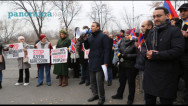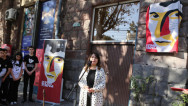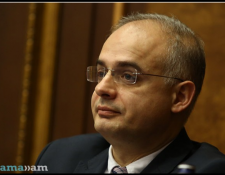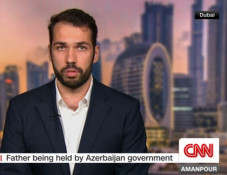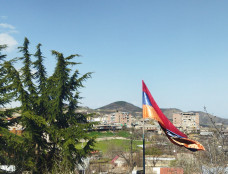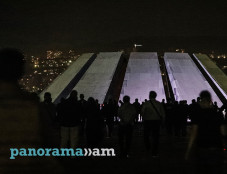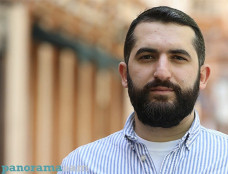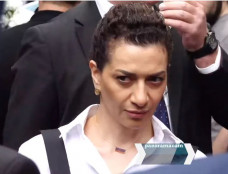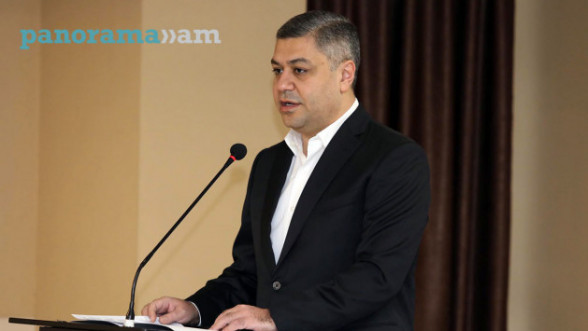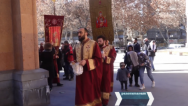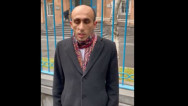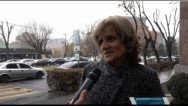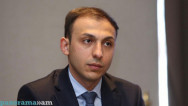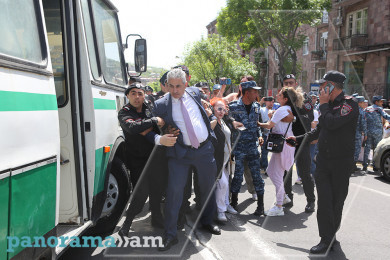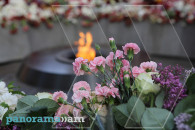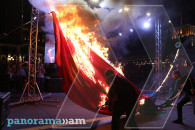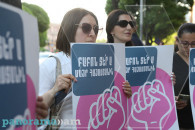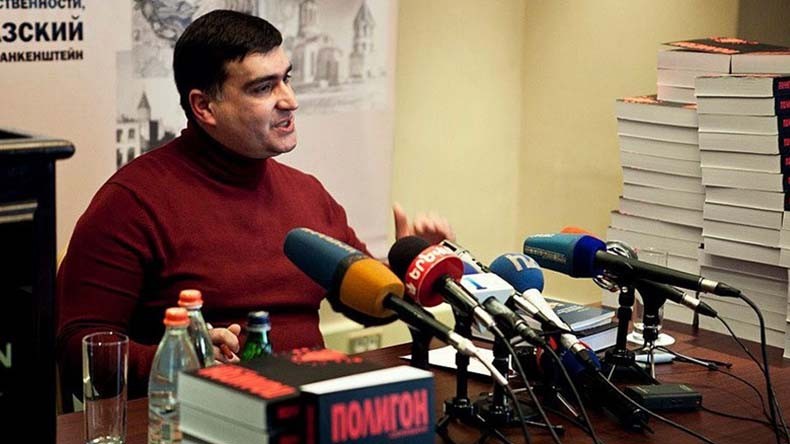
Aris Ghazinyan: Yerevan became place of pilgrimage for Christians since late 13th century
Mass destruction was not included in the plans of the Mongols, who captured the territory of Armenia; at least initially. Not encountering a persistent and lengthy resistance from the Zakarids, they did not destroy local feudal lords, who could preserve not only their properties in general, but also part of their feudal rights byrecognizing their supreme power. Armenian journalist and researcher ArisGhazinyan writes about it in his book “Yerevan: with a cross or on the cross,” which is an attempt of setting and considering an extremely diverse range of processes directly or indirectly forming the character of the development of the territory in question and predetermining the inevitability of turning Yerevan into the main center of the Eastern Armenia, and later on into the capital of the recovered Armenian state.
After a short stagnation, the normal life was reestablished relatively fast and in the second half of the 8th century, a new revival of construction and cultural-economic life was observed in Armenia. Rich and luxurious temples, castles, and other constructions emerged in the initial period of the Mongolian domination are the evidence.
“The shock experienced by Armenia was not a lasting one this time, and Armenian regions suffered less than the Muslim lands of the Eastern Persia and Arabian Iraq,”Ghazinyan writes noting that this was explained by the fact that the Mongols practically producednothing: they lived and enriched purely at the expense of tribute.
Such a policy carried out on a huge part of the mainland resulted in an unprecedented flowering of international trade exactly in the initial Mongolian period. This period was also marked by the proceeding of the formation of the families of Armenian merchants, whosefounders were participants of international barter already before the establishment of the Mongolian domination.
According to Ghazinyan, the chronicle has preservedthe surnames of several merchants of that time: Avetyans, Umekyans, Honents and others. In particular, SahmadinAvetyan with his sons Ameribek and Azarbek, ParonChar Umekyan with his son Umek, TigranHonents, and others were famous merchants. This commercial layer started to actively invest capital in real estate – castles, gardens, villages, and even entire towns. An inscription on the wall of Yerevan KatoghikeChurch dating back to 1264 reads, “I am Sahmadin, the son of the Avetyans from Ani, I bought Yerevan with land and water and transformed it into a hereditary property.”
Therefore, it can be assumed that in the sixties of the 8th century, the city became the acquisition of merchant Sahmadin from Ani, one of the richest Armenians of the Mongolian period. He was a typical representative born on the wave of international trade of the community of businessmen tempted in different bargains and alterations of usurers and merchants, who realised that “money that exists is the time that cannot exist just as well.”
New Armenian merchants bought hereditary properties from the princely descendants who had become poor by that time, and they demonstratively informed about it. Then numerous constructions appeared in Yerevan, over which the modern city center is settled down now. “The Mongolian cultural layer” is settledwithin the Yerevan boundaries at a depth of 12-8 meters from the surface and is often exposed during construction and earthwork, Ghazinyan writes.
As a result of the seventeen-year reign of IlkhanAbagi,Genghis Khan’s great-grandson, the son of the founder of Hulagu state,Hulagu khan, Yerevan developed, and its communicative and commercial significance increased. Spiritual life also developed, and the Church appeared as an alternative to the newly introduced notions. “Two epigraphic inscriptions on the walls of Avan temple in Yerevan with a reference to the names of Georgian and Armenian grandees date back to eighties of the 8th century,” Ghazinyan writes.
The first inscription of 1285 is Chalcedonian and mentions the Georgian prince David, obviously the future king David VIII (the eldest son of Demetrius II). The second inscription (1287) mentions Armenian commander Hutlubuga who occupied the post of amirspasalar (during the reign of Demetrius II) and was glorified by KhachaturKecharetsi, an Armenian miniaturist and poet from princely family Halbakyan-Proshyan and a prior of Kecharis monastery.
In 1282, Abaga khan was killed, and his brother Ahmed Tekuder khan ascended the throne. He displaced Argun, the successor to the throne, who was the son of the poisoned ruler of Hulagu state and the first to become chingizid-ilkhanadopting Islam and ordering to call him solely in a Seljuq manner, Sultan Ahmed.
Sultan Ahmed was a devout fan of Seljuqs. That is why he decided to transfer the residence of Iran’s ilkhan closer to the border, to the Ararat plain.
Armenian bishop Stepanos writes, “He captured the power by force and replaced the natural title ‘khan’ with sultan, after which Turks moved forward on the main posts <…>All sort of disgusting and odious servants of Muhammad,sheikhs and javalakhs, gathered around him.”
Ghazinyan informs that a deadly threat hanged over Yerevan: Sultan Ahmed proclaimed a course of Islamization of the whole country.
Tekuder’s one-sided policy contradicted the philosophy of the inner organization of the Mongolian empire and was a specific challenge to the developed tradition; in particular, he wore Turkic clothes, oppressed Buddhists and Nestorians, who had always been respectedby Hulagudynasty. Such a policy did not enjoy a general approval inside the ruling elite, and several chingizids initially considered Tekuder a usurper.
“In such a complicated time, he made another mistake: he gave unprecedented privileges to Syunik prince TarsaichOrbelyan, with the aim of suppressing the Armenian nation. The idea of suppressing the Armenians with the hands of a compatriot, especially a famous prince and warrior, seemed a strategic discovery to him. In addition, Tarsaich was the brother of Syunik prince SmbatOrbelyan, the owner of a tarkhan label and golden paiza,”Ghazinyan writes noting that Tekuder made an error; he did not realise the scale of hatred that Armenians, Georgians, Buddhists, Nestorians, and influential Mongolian families had towards him, and they frequently acted jointly.
In 1284, all this leaded to “Ahmed the Turcophil’s” dethronement. “Tekuder remembered about his origin only in the last instant of his life, when he was executed as a chingizid according to Mongolian custom, without shedding his blood, just breaking his backbone,”Ghazinyan informs adding that the former order was recovered with Arghun khan (the forthilkhan, Abagi’s son) ascending the throne.
The court got rid of the Turkic domination, and mainly Armenians and Jews were involvedin the state affairs. TarsaichOrbelyan (as a sign of special gratitude for his service in Tekuder’s dethronement) was grantedthe title of “commander and protopope of the entire Syunik region” and all the hereditary lots were given back to him by the new ilkhan’s special order. It was also decided to appoint Tarsaich as the atabeg of Georgia and the regent of the prince, as a result of which “TarsaichOrbelyan’satabeg district” in Georgia was established on the lands from Tiflis and Kars to Yerevan and Dvin. The inscriptions mentioning Prince David and commander Hutlubug appeared on the walls of Avan temple at that very time.
In the eighties, the Sahmadin’s name also emerged, this time with his sons Amirbek and Azarbek, who already appeared as “lords.”
In particular, the epigraphic inscription of 1288 on the wall of Oshakan church says, “In the years of reign of terHamazasp and Sahmadin and his sons Amirbek and Azarbek, I, Geshmard was an amir and Hovik was a dzernavor; we left a tax to Saint Karapet<…> from Oshakan gardens, for the sake of our souls’ salvation and parons’ longevity.”
“At that very time, Yerevan suburb Dzag, where a Council hadrecently taken place, again came under the spotlight.In 1293, CatholicosGrigor VII Anavarzetsi granted Dzagavank a relic with a particle of the True Cross, which, according to early medieval author Agatangeghos, had been presented to the head of the Armenian Church Gregory the Illuminator by the Roman bishop Sylvester I and the emperor Constantine.A dome church with two tiers was constructed in Dzag especially for keeping this relic,”Ghazinyan writes.
Since then, Yerevan became a place of pilgrimage: the healthy and the leprous, the grandees and the commoners, the believers and the Pharisees, the poets and the snobs, the publicans and the poor – they all went to Dzag to bow to the particle of the True Cross. On foot or on vehicles, with or without gonfalons, the way reminded the Cross; it was true, particularly because the location of the place extremely resembled the Jerusalem height, though a Golgothaawaited the Armenians later.
Meanwhile, in 1295, Argun khan’s eldest son, Kazan, who was brought up in Buddhism, adopted Islam under the name Mahmed at ascending the Hulagu throne and proclaimed Islam as the official religion in the country. Ghazinyanwrites that “Kazan khan had a reputation of an educated governor and even of a reformer, but most of all he was experienced in enforcing Christians to recreancy. Being a recreant himself, he did not see anything blameworthy in it, especially if the interests of the state required that.”
The Ilkhanate state was gradually breaking apart, and religious fanaticism, requisitions, murders reached unimaginable scales in the horrible attempt of extending its existence. “Our life was oppressed and depleted because another nation of marksmen followed the evil sect of Mahmed leaving its own religion,” the author cites historian StepanosOrbelyan as writing.
However, the condition of the Christians became tougher in the period of the reign of young Christian Nikolay, who adopted Islam whenSultan Muhammad KhodabandehOljeitu-Kharbandaascendedthe throne: “He wanted to destroy Christianity in Armenia and Georgia, and sent people to the countries under his control to impose a shameful stamp on Christians and collect taxes on census of 40 to 10 silvers from each.”According to Poghos (Pavel), a graduate of the medieval University of Gladzor, “Kharbanda demanded taxes also from azats and foreigners,” who were released from that during the reign of the previous khans.Ghazinyan writes that the generalised name of the Christian tax was jizyah.
Though the Armenians formally preserved their patrimonial estates, they actually maneuvered among the Muslims, Byzantines and Catholics, and all the angles of that triangle were similarly sharp.
The general atmosphere atthe boundary of the 13th and 14th centuries offered the Armenians the way to apostasy more persistently and consistently. Ghazinyaninforms that the fact of belonging to the Apostolic Church “began to cost” very much, and tens of thousands Armenian families forcedly left the country and “saved their Armenian origin” abroad.
“The situation was depressing: the Roman Church tried to make the native Armenian population adopt Catholicism, the Sultanate of Rum and Hulagu state intended to make them adopt Islam, and Byzantine wanted the establishment of the Greek Orthodoxy,” the author writes noting that the Armenian clergy had to infinitely maneuver being driven into a deadlock.
As a result, the religious aggression together with the toughest conditions of exactions stimulated an outflow of the population.
TerterYerevantsi, a medieval poet famous for his philosophical parables and dialogues, remembered his motherland already being in a foreign land, in Crimea:
“ThereareKhorVirap, Etchmiadzin,
And there is a city near them,
It is the pious Yerevan, and I pray to God to liberate it.”
This is how the 14th century of the Christian era began in the Armenian history, and the worst was yet to come…
To be continued
ArisGhazinyan’s “Yerevan: with a cross or on the cross” is a book about the social and political history of Yerevan and Yerevan district (as a habitat) since the declaration of Christianity to the beginning of XIX century. In addition to demonstrating historical facts based on archive documents and sources, the book also considers the fundamental theses of the Azerbaijani historiography and Pan-Turkic ideology aimed at appropriating the historical, cultural, and spiritual heritage of the Armenians and other nations of the region by falsifying their history.
Related news
- Aris Ghazinyan: Territory of Yerevan generates unlimited time in its limited borders
- Aris Ghazinyan: According to famous anthropologists, Armenians are descendants of ancient indigenous race, which preserved its type from any influence
- Aris Ghazinyan: According to orientalist Diakonoff's memories, most of Azerbaijani historians had “quite indirect relation” to science
- Aris Ghazinyan: Politicians and scientists in Turkey and Azerbaijan completely ignore primary sources on Yerevan history
- Aris Ghazinyan: Past and future in Azerbaijan are modeled upon decrees and program speeches of president
Newsfeed
Videos



